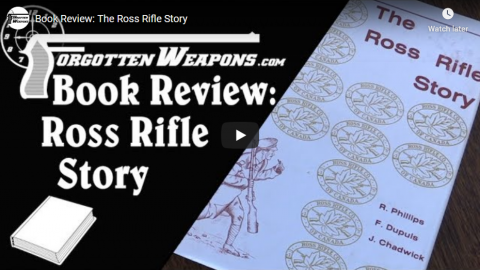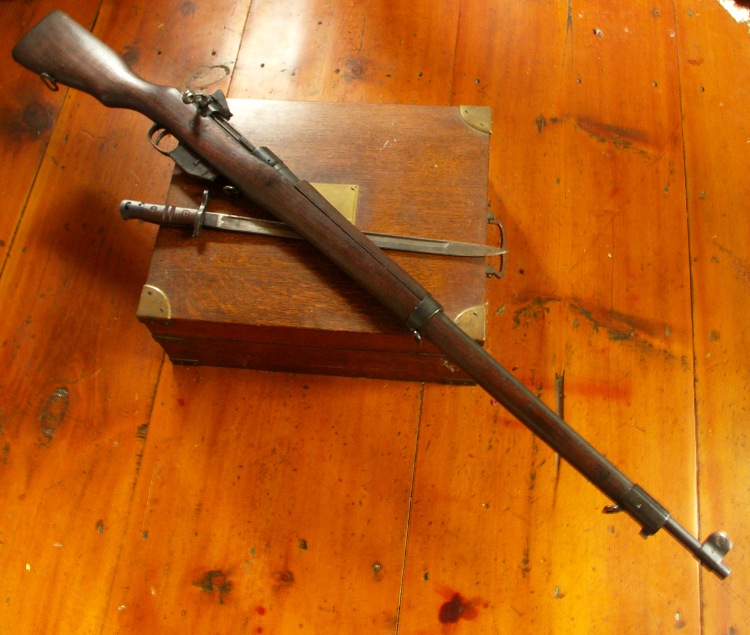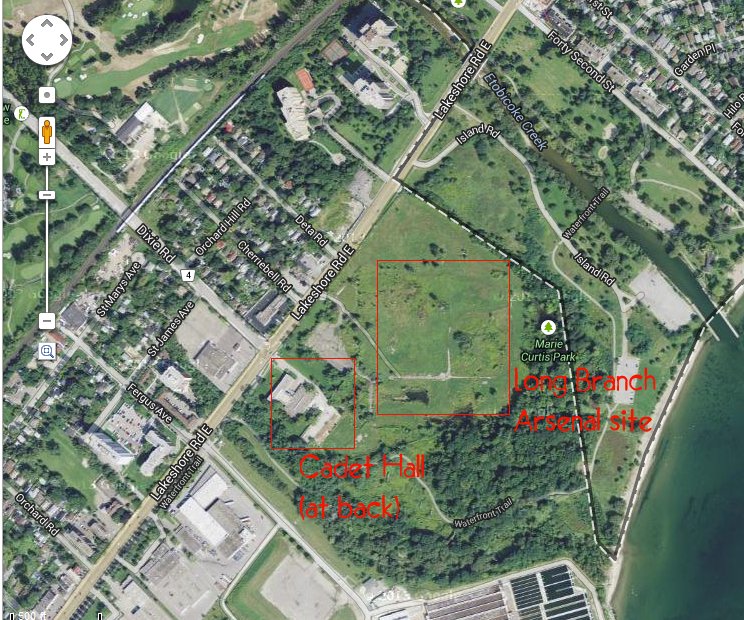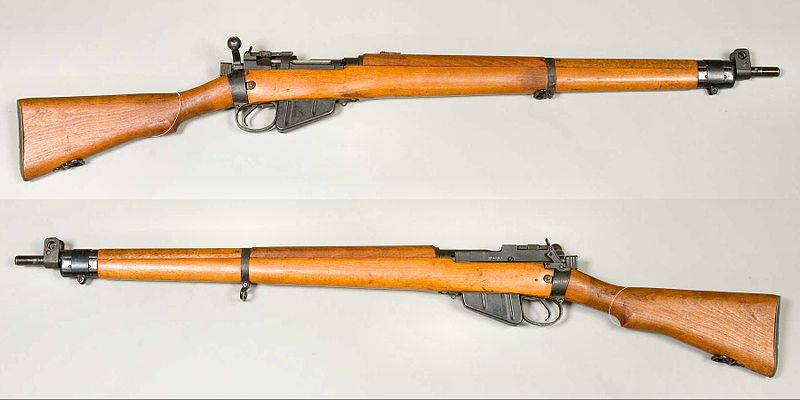Forgotten Weapons
Published on 8 Sep 2019http://www.patreon.com/ForgottenWeapons
Cool Forgotten Weapons merch! http://shop.bbtv.com/collections/forg…
The Ross Rifle Story is the Bible of Ross rifle collecting — it is the only substantial reference work on the subject and it has a tremendous amount of information about the development of the Ross. However, it is also one of the worst-edited firearms reference books I am aware of. It has a second Table of Contents on page 85 — need I say more than that?
Well, I will. The photographs are black and white and often too dark or too light. Beyond it really being two separate manuscripts printed back to back, the organization is really lacking. Finding information in the book is sometimes very difficult, as the subject matter jumps around a lot. The story of the Ross — especially separating the civilian and military development — is a pretty complicated one, and even a well-edited book on the subject might be a bit difficult to parse. This book is really bad at times.
But for all that, it does have the information (with only a few errors), and it’s the only book that does. If you are interested in the Ross, this is a must-have book despite its problems.
A second printing was run in 2002, and not much effort was put into marketing it. Despite the online prices all being $300+, the seller still has a couple dozen copies remaining as of this writing. To order one (for $100 plus shipping, via PayPal) email him at ross.rifle.story@sympatico.ca .
Contact:
Forgotten Weapons
6281 N. Oracle #36270
Tucson, AZ 85704
September 12, 2019
Book Review: The Ross Rifle Story
December 2, 2018
Canada’s initial WW1 infantry weapon, the Ross rifle
During the Boer War, the British were busy producing Lee-Enfield rifles for the British army and didn’t have enough extra manufacturing capacity to fulfill a modest Canadian order. The government of the day took this opportunity to try to find a distinctly Canadian weapon to equip the (tiny) Canadian militia. They ended up purchasing the Ross rifle, which is what the men of the Canadian Corps took into the field during the First World War. It didn’t go well, as the highly accurate Ross was not well-suited to the rough-and-tumble life of an infantry weapon in the trenches of Flanders. The mechanism was prone to jamming in muddy conditions and did not work well with low-quality ammunition. It became a national scandal, and eventually most of the Ross rifles were replaced with British Lee-Enfields, except for the sniper weapons (where the Ross was much better suited to the needs of the job). The National Interest has the story:
Tested head to head with the Lee-Enfield Mark I, the Ross did well in some of the trials but came up short in other crucial ones, such as the endurance test. Some 1,000 rounds were fired through each rifle and, while the Lee-Enfield functioned well, the Ross repeatedly jammed. After the 300th round, the heat of firing melted away the foresight, which was fastened with common solder. Ross explained that prior tests had been conducted with ammunition of American and Austrian manufacture and that “the standard called for in the manufacture of British .303 cartridges is not of the same precision and quality of material hence greater limits have to be allowed.” His dubious explanation was accepted by the committee.
Already the enterprise was off on the wrong foot. Due to Borden’s choices, the investigative committee leaned in favor of the Ross. It was obvious that no accurate appraisal of anything can result from a biased investigative body. Hughes in particular championed the rifle, and his stubborn resistance to evidence that contradicted his opinions bordered on the irrational. To the end he would insist that the Ross was superior to the Lee-Enfield, even after thousands of Canadian soldiers had simply thrown theirs away on the battlefield.
If the weapon had flaws, so did the purchase contract. Under its terms, Ross was to provide 12,000 rifles during 1903 and 10,000 every year thereafter, with a 75 percent advance on all rifles ordered for the duration of the contract, which was not stipulated. The cost of the Ross was not to exceed that of a Lee-Enfield in Britain, yet the price set was $25, compared to $18.27 the War Office paid for a Lee-Enfield. The contract also stated that materials and machinery Ross needed to import to meet the manufacturing requirements were to be exempt from import taxes. Because there was no division outlined between military and sporting rifles, Ross could get all his imports duty-free, regardless of whether they were built for government contract or not. There was no guarantee Ross would provide more rifles in the event of a national emergency, only that he would provide 10,000 annually after the initial 12,000. There was also no mention in the contract of providing a bayonet.
[…]
The final verdict on the Ross was rendered in the vile ooze of mud, filth, and rotting corpses that characterized trench warfare during the Great War. From the first day of fighting, the frequent jamming of the Ross forced soldiers to strike the bolts with entrenching tools or boot heels to clear them. The problem was attributed to the British ammunition being used, which was slightly larger than Canadian- manufactured rounds, but a significant factor was faulty manufacturing that resulted in deformed firing chambers. Long and unwieldy, the Ross was also not well suited for use in narrow trenches. Soon, British Small Magazine Lee-Enfield rifles began appearing in the Canadian ranks, causing First Division commander Lt. Gen. E.A.H. Alderson to issue an order that his men were not permitted to be in possession of SMLE rifles. It was an order largely ignored.
If earlier investigations had repeatedly given the rifle a pass and rendered a skewed verdict, the Canadian soldiers in the trenches did not. In April 1915, after the bloody fight at the Second Battle of Ypres, Belgium, which also saw the first gas attacks of the war, 1,452 of the 5,000 surviving Canadian soldiers threw away their Ross rifles and picked up Lee-Enfields from British casualties. The verdict of the fighting soldier had been delivered. With confidence in the rifle badly damaged, British Commander in Chief Sir John French issued orders rearming the First Canadian Division with the SMLE.
Not all the reports from the line were negative; the superb accuracy and faster loading capability of the Ross made it an excellent sniper’s rifle, as Sergeant William Carey, one of Canada’s top snipers, discovered one morning at St. Eloi. He and a German sniper spotted each other at the same time and both fired, each missing the other. But the bolt action of the Ross gave Carey the edge; he was able to reload and fire faster than the German, and his next shot was lethal. Although it would be replaced as the standard issue service rifle, the Ross would remain a valuable sniper’s weapon.
August 20, 2017
Trench Mortars – German Double Standards – Hughes’ Shovel I OUT OF THE TRENCHES
Published on 19 Aug 2017
Out Of The Trenches is finally back! In this episode Indy talks about the role of trench mortars in contrast to artillery, how the Germans could condemn the use of shotguns and saw-back bayonets while using chemical weapons, and a shovel with a hole in it.
July 25, 2017
British Rifles of WW1 I THE GREAT WAR Special feat. C&Rsenal
Published on 24 Jul 2017
Check out Othais’ episode about the Ross Rifle: https://www.youtube.com/watch?v=2uGYSQ_-FJU
Othais introduces us to the famous British standard rifles of WW1 including the Short Magazine Lee Enfield (SMLE), the Long Enfield and the controversial Ross Rifle.
Update: Patrick Crozier offers a bit of light entertainment in relation to the “Smellie”:
Lee Enfield, eh? Pile of rubbish https://t.co/ljExkgxcKY
— Patrick Crozier (@patrickcrozier) July 25, 2017
February 8, 2016
Small Arms of WWI Primer 014: Canadian Ross Rifle Mark III
Published on 8 Dec 2015
Othais and Mae delve into the story of this WWI classic. Complete with history, function, and live fire demonstration.
C&Rsenal presents its WWI Primer series; covering the firearms of this historic conflict one at a time in honor of the centennial anniversary. Join us every other Tuesday!
Ross Rifle MkIII
Cartridge: .303
Capacity: 5 rnds
Length: 50.6″
weight: 9.9 lbsThis disastrous straight pull rifle remains an infamous part of WWI. It brought down politicians, cost soldiers’ lives, and was generally a complete failure on the battlefield. But was the Ross Rifle really unfixable? Or did the Canadians drop the gun just when they had it finally working?
Additional reading:
The Ross Rifle Story
Roger F. Phillips
http://astore.amazon.com/candrprimer-20
August 18, 2014
Another look at the Ross Rifle, initial Canadian infantry weapon of WW1
Last year, I posted a video by Lickmuffin, showing his recently acquired Ross Mark III, a “sporterized” version of the model that equipped the First Canadian Division when it took the field in France in 1915. Yesterday, David Pugliese revisited the Ross controversy in the Ottawa Citizen:
When soldiers in the throes of battle discard their rifles and pluck a different weapon from the hands of dead allies, there’s clearly a serious problem, writes John Ward of the Canadian Press news service.
So it was with the Ross rifle, the weapon that Canadian soldiers took with them to the start of the First World War a century ago.
More from Ward’s article:
It was the brainchild of Sir Charles Ross, a wealthy Scottish-born engineer and inventor who offered it to the Canadian government as a military firearm well before the war began.
To Sir Sam Hughes, Canada’s minister of militia — defence minister in modern parlance — at the time, the Canadian-built Ross was highly accurate and the perfect tool for his soldiers, whom he saw as frontier marksmen.
But troops, some of whom sneered at the rifle as “the Canadian club,” soon discovered the Ross was not suited to dirty, rough-and-tumble trench warfare. They preferred the robust Lee-Enfield carried by their British comrades, picking them up from the battlefield when they could.
The .303-calibre, straight-pull Ross was longer than the Lee-Enfield, a problem in the cramped confines of the trenches. It was heavier, too, and in a day when infantrymen were over-burdened, any extra weight was unwelcome. When fired with its bayonet attached, it tended to shed the bayonet.
The Ross was also susceptible to jamming from dust and dirt and was very finicky about the quality of ammunition. The carefully machined cartridges made by the Dominion Arsenal worked fine, but not so the mass-produced British ammunition, which could vary in size beyond the Ross’s fine tolerances.
Further, it was easy to reassemble the Ross bolt incorrectly. Even when misassembled, the bolt would fit in the rifle and even chamber and fire a cartridge, only to slam back into the rifleman’s face — unheard of for most bolt-action rifles.
David Pugliese also linked to this Forgotten Weapons video, which investigates the best known failing of the Ross in combat:
Published on 16 Jun 2013
There is a long-standing urban legend about the Canadian Ross rifle, a straight-pull bolt action that was used in lieu of the SMLE by Canadian troops early in World War One. The story is that the Ross would sometimes malfunction and blow the bolt back into its shooter’s face, with pretty horrible results. Well, I wanted to learn “the rest of the story” – could this actually happen? What caused it? How could it be prevented? In short, what would a Ross shooter need to know to remain safe? And if I could get some cool footage of a bolt blowing out of a Ross in the process, all the better.
Well, reader Andy very generously provided a sporterized Ross for the experiments, and I started reading into what the issue really was. Turns out that the legend was quite true – you can put a Ross MkIII bolt together the wrong way, and it will allow you to fire without the locking lugs engaged, thus throwing the bolt back out of the gun at high velocity. However, the issue was recognized fairly quickly, and the vast majority of Ross rifles were modified with a safety rivet to prevent this from happening. It is also quite easy to determine if a Ross is assembled correctly, once you know what to look for.
December 21, 2013
The Ross Rifle
When I was an army cadet, the weapon we trained on was the Lee Enfield, an old but highly reliable British rifle. Our cadet range used Lee Enfields with .22 adapters, but due to an odd quirk of timing, the very first weapon I ever fired was a Lee Enfield .303 … I think it weighed nearly as much as I did at 12. Interestingly, our cadet hall was adjacent to the site where the Long Branch Arsenal had manufactured Lee Enfield rifles during WW2, and the building may have been part of the factory complex.
At the beginning of World War One, the Canadian army was supposed to be equipped as much as possible with Canadian-produced kit, including the infantry rifle. Canadian industrial development meant that we didn’t have factories that could immediately turn out bigger pieces of armament, but rifles were easily within reach. The government’s choice was the Ross rifle, which was already in production and was highly accurate but had a few disadvantages that were not discovered until the first Canadian troops were in Flanders. Wikipedia says:
The Ross rifle was a straight-pull bolt action .303 inch-calibre rifle produced in Canada from 1903 until 1918.
The Ross Mk.II or (“1905”) rifle was highly successful in target shooting before WWI, but the close chamber tolerances, lack of primary extraction and overall length made the Mk.III (or “1910”) Ross rifle unsuitable for the conditions of trench warfare and the often poor quality ammunition issued.
By 1916, the rifle had been withdrawn from front line service, but continued to be used by many snipers of the Canadian Expeditionary Force until the end of the war due to its exceptional accuracy.
The Ross Rifle Co. made sporting rifles from early in its production, most notably chambered in .280 Ross, introduced in 1907. This cartridge is recorded as the first to achieve over 3000 feet per second velocity, and the cartridge acquired a very considerable international reputation among target shooters and hunters.
Lickmuffin, who frequently posts comments here on the blog, recently acquired a “sporterized” version and produced a short video about the rifle:







